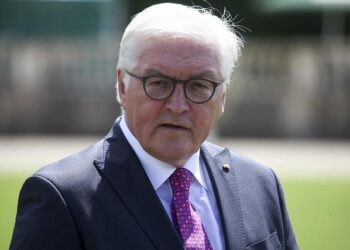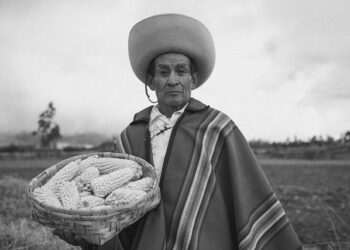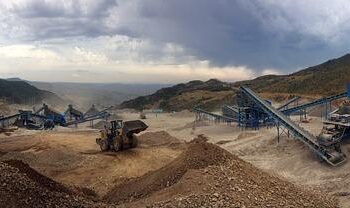Norway and Faroe Islands Forge New Path in Sustainable Herring Management
In a pivotal move for the North Atlantic fishing sector, Norway and the Faroe Islands have finalized an agreement delineating herring quotas for the forthcoming season. This accord underscores a shared dedication to sustainable fisheries management amid growing concerns over marine resource depletion and environmental shifts. Herring remains a cornerstone species underpinning both nations’ economies and food security, making this collaboration crucial for balancing ecological preservation with economic interests.
Collaborative Framework to Safeguard North Sea Herring Stocks
The newly established quota system targets the Northeast Atlantic’s North Sea herring (NVG herring), aiming to maintain healthy population levels while supporting fishing communities. This joint initiative emerges against a backdrop of increasing awareness about overexploitation risks and climate-related impacts on fish habitats.
Key components of this partnership include:
- Coordinated Stock Surveillance: Norway and the Faroe Islands will implement integrated monitoring mechanisms to track herring populations accurately, ensuring adherence to agreed limits.
- Enhanced Scientific Research: Both countries commit additional resources toward studying ecosystem dynamics affecting herring sustainability, including oceanographic changes.
- Fishermen Adaptation Support: Programs designed to assist fishers in transitioning towards sustainable practices under new quota regulations will be developed.
| Nation | Quota Allocation (Metric Tons) |
|---|---|
| Norway | 200,000 |
| Faroe Islands | 90,000 |
This agreement represents an innovative model of transboundary resource governance that prioritizes marine biodiversity conservation alongside economic resilience within coastal communities.
The Broader Impact on Regional Fisheries Governance
The NVG herring quota pact between Norway and the Faroe Islands signals progress in harmonizing regional fisheries policies across the Northeast Atlantic. By grounding decisions in robust scientific assessments, both parties aim not only to conserve vital fish stocks but also foster solidarity among neighboring maritime stakeholders.
- Tightened Data Sharing: The exchange of real-time fisheries data enhances transparency and collective accountability between nations.
- Economic Predictability: Stable quotas provide fishermen with more reliable income forecasts, reducing market volatility risks inherent in fluctuating catch limits.
- Biodiversity Protection: Prioritizing long-term stock health helps preserve ecosystem services critical for sustaining diverse marine life forms beyond just commercial species.
This framework actively involves local fishing communities, environmental NGOs, and governmental agencies working together to monitor compliance rigorously. Such inclusive governance models could inspire similar cooperative efforts globally as pressures mount on shared aquatic resources due to climate change and human activity intensification.[1]
| Expected Outcomes | Description |
|---|---|
| Replenished Fish Populations < td >Joint surveillance enables adaptive management strategies that promote stock recovery . | |
Sustaining Herring Stocks: Strategic Recommendations Moving Forward Â
A comprehensive approach is essential for securing long-term viability of North Sea herring populations while maintaining ecosystem integrity. Cross-border collaboration remains fundamental given migratory patterns spanning multiple jurisdictions. Recommended actions include:
- < strong >Science-Based Quotas : Establish catch limits grounded firmly in up-to-date biological assessments incorporating environmental variability factors .  < / li >
- < strong >Robust Monitoring & Enforcement : Deploy advanced tracking technologies such as electronic logbooks or satellite surveillance systems coupled with stringent compliance checks .< / li >
- < strong >Bycatch Mitigation Innovations :/ Promote development & adoption of selective gear designs minimizing unintended capture , especially juvenile specimens critical for future recruitment .< / li >
- < strong >/ Expanded Research Funding :/ Support multidisciplinary studies examining how ocean warming , acidification , or pollution influence spawning success & larval survival rates.< / li >
- / Community Engagement Initiatives :/ Strongly involve fishermen through educational programs emphasizing stewardship roles & benefits from sustainable harvests.< / li >
< / ul >Proposed Initiative Purpose
Joint Scientific Expeditions Collaborative fieldwork assessing stock status & habitat conditions.
& <>Fisheries Policy Forums</><=><=Regular meetings facilitating dialogue on regulatory updates & best practices.></></></></&g> & nbsp ; Public Awareness Campaigns & nbsp ;< / t d >& nbsp ;< t d s tyle = " padding : 8 px ; " >& nbsp ; Educate consumers about choosing sustainably sourced seafood products.& nbsp ;< / t d >& nbsp ;
</t r></tbody>
</table>
<p>By embracing these strategies alongside their recent agreement, Norway&amp;amp;amp;amp;amp;amp;amp;amp;amp;amp;;#39;s&'sandtheFaroeIslandscanfortifythefutureofherringsustainablywhilecontributingtohealthiermarineecosystemsoverall.& </p>
A Forward-Looking Perspective on Maritime Resource Cooperation
The consensus reached by Norway and the Faroe Islands concerning upcoming season’s herring allocations marks a milestone toward integrated fishery stewardship within their shared waters. Demonstrating mutual responsibility amidst fluctuating stock dynamics reflects maturity in bilateral relations focused on ecological equilibrium without compromising socio-economic welfare tied directly to these fisheries sectors.
This accord exemplifies how transparent negotiation processes backed by science can yield practical solutions benefiting both nature conservation goals as well as community livelihoods dependent upon them.
The industry now anticipates detailed implementation plans outlining enforcement mechanisms along with support structures enabling fishermen’s smooth transition into regulated harvesting frameworks — hopeful that this partnership becomes a blueprint inspiring wider regional cooperation across international maritime boundaries.
ADVERTISEMENT















